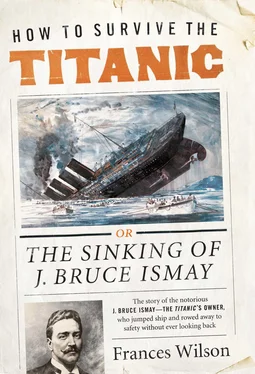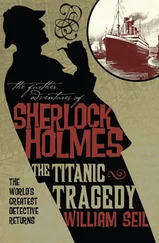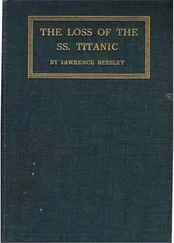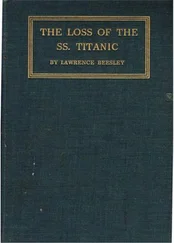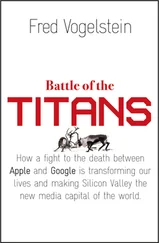Joseph Conrad,
Youth
Ismay’s father, Thomas Henry, was born in 1837, the year Queen Victoria came to the throne and Bruce, like the future Edward VII, was as different from his mighty parent as it was possible to be. Thomas was a Victorian, Bruce an Edwardian; the father stood for entrepreneurial strength and imperial greatness, the son for decline.
The Ismays were of Cumbrian stock and Thomas began his life in the small town of Maryport at the mouth of the River Ellen, in one of a row of tiny cottages called Whillan’s Yard. His own father, Joseph, was a shipbuilder and after the birth of three further children — Charlotte and Mary, who were twins, and Sarah — the family moved to a larger house in the shipyard where Thomas’s grandfather, Henry Ismay, who had once been a sea captain, now worked as a timber merchant. In their new home, called The Ropery because the ropes for the ships lay all around, a final child, John Sealby, was born. Thomas spent his childhood at the harbour, chatting to the sailors and carving model ships from driftwood. Because he was bright and promising, he was sent to a good school in Carlisle where he excelled at sport, especially cricket, and took special studies in navigation. He also improved in writing: a letter from his father, dated 1849, congratulates Thomas on his most recent correspondence which had been ‘very well Wrote and spelled’.
Known as ‘Baccy’ for the tobacco he chewed all day in imitation of the sailors at the harbour, Thomas was short, confident, convivial and popular. He was, a contemporary remembered, ‘a dark complexioned lad with dark piercing eyes, whose hobby was the sea, whose ambition was a sea-faring life, and who never seemed so happy as when engaged in fashioning a miniature sailing vessel with a pocket knife out of a block of wood, rigging it with masts and sails… and then sailing [it] on the pond at Irthington’. When he was thirteen his father died and Thomas became head of the family. He stayed on at school until he was fifteen and at sixteen began an apprenticeship in the Liverpool shipping firm of Imrie, Tomlinson, where he befriended William Imrie, a fellow apprentice and the son of the joint owner.
At eighteen, he left England to test the fibre of his stuff aboard the Charles Jackson, a small sailing ship of 352 tons destined for Chile. This was Thomas Ismay’s first sea voyage and, always a keen travel diarist, his record of the journey proves him a solid, humorous and uncomplicated team player.
January 7, Monday. This is the 19th anniversary of my birthday, and a beautiful day it is, being almost calm, remained on deck nearly all day shooting gulls. The crew in the forecastle had a bottle of brandy given them to drink, and if I judge from the songs I heard them singing, they enjoyed the contents. During the evening Rapp, the Captain and myself were amusing ourselves with singing, Home Sweet Home, etc. Of course, the performance would not have elicited great applause from an audience endowed with taste. I do hope I may enjoy every anniversary as well.
He relieved the Captain’s toothache (‘I induced him to get a little salt heated, and put into a flannel stocking and tied round the jaw’), guffawed when he got a wetting (‘everyone generally enjoys a laugh when another gets wet, and it is best for the sufferer to laugh too’) and made the most of the worst conditions (‘You have to hold on to your plate to keep it near you, to hold onto your glass of water to avoid the unnecessary luxury of a shower bath’). Once the Charles Jackson arrived in Chile, Thomas visited the theatre, enjoyed the food and drink, rode out in the mornings and danced by night with the local girls, who may have ‘spat’ and ‘smoked’ but ‘between the ankles and the chin’, he thought, were ‘the best formed race of women in the world’. 1
When he returned to Liverpool in 1858, Thomas was unstoppable. Aged twenty-two, he set up a ship-broking business, became director of his own line of steamships carrying cargo and passengers to South America and married Margaret Bruce, daughter of local shipowner Luke Bruce. Aged thirty, he bought for £1,000 the goodwill and house flag of the then bankrupt White Star Line of Australian clippers, founded twenty years before by the Liverpool businessmen Henry Threlfell Wilson and John Pilkington, then cashing in on the gold rush. Australian gold was small fry: Thomas Ismay’s aim was to cash in on the floods of immigrants making their way to the United States.
Work was his passion and his calling. Ismay Senior wanted to make money but also to make his mark, to bestow pride on his nation and to sire a dynasty who would carry his torch. In 1868 he attended a dinner party at Broughton Hall, the Liverpool home of a Hamburg Jew called Gustavus C. Schwabe. The guests included Thomas’s former fellow apprentice, William Imrie. Over a game of billiards, so the story goes, it was agreed that Ismay and Imrie would together form a new company, Ismay, Imrie & Co., which would run steam-powered ships across the North Atlantic and that Harland & Wolff, co-owned by Schwabe’s nephew in Belfast, would be the exclusive builders of these vessels. Harland & Wolff would use only the best materials available, and payment would be an unusual arrangement based on cost plus agreed profit margin. Schwabe, who had already invested in another Liverpool shipping company, the Bibby Line, three of whose ships had been built by Harland & Wolff, would support this new venture and ensure further backing from other Liverpool businessmen.
Thus the Oceanic Steam Navigation Company, better known as the White Star Line, was formed, with Ismay, Imrie & Co. as the parent company. Ismay would look after the steam vessels and Imrie the sailing ships, both of which would be built by Harland & Wolff. ‘The story of the association between the Belfast builders and the White Star Line,’ read an article in the journal Engineering in 1912, ‘practically involves the story of the development of the Atlantic liner.’ It was to be ‘a wonderful story’, reflected the London Opinion in 1904, ‘of tonnage, horse-power and names ending in -ic’.
Edward Harland had come to Belfast from Yorkshire in 1854 to take charge of a shipyard on Queen’s Island. In 1858 he bought the yard and in 1861 he and Gustav Wolff formed Harland & Wolff. Twenty years later what had begun as a tiny works on a few acres, with one berth and forty-eight employees, contained six slips and a thousand workers including interior designers, artists, tapestry makers and upholsterers. Eventually Harland & Wolff would cover 80 acres, employ 16,000 local men and distribute £28,000 in weekly wages.
In 1836, a scientific writer called Dionysius Lardner gave a lecture on steam navigation in which he suggested that ‘establishing a steam intercourse with the United States’ was as likely as ‘making a voyage from New York or Liverpool to the moon’. That same year, Isambard Kingdom Brunel formed the Great Western Steamship Company in order to build a line of steamships to travel between Bristol and New York. Two years later the Sirius, owned by the St George Steam Packet Company, was the first ship to cross the Atlantic by steam power alone. Taking eighteen days, she beat Brunel’s Great Western by twenty-four hours. When the fuel on the Sirius ran out, the crew burned the furniture; the science fiction writer, Jules Verne, was inspired to use the scene in Around the World in Eighty Days.
Then in 1840 a Canadian named Samuel Cunard beat both the Great Western Steamship Company and the St George Steam Packet Company in winning a British government contract to run the first regular mail and passenger transatlantic steamship service. Cunard’s fleet of four sister steamers could offer what no other shipping line was able to do: a swift and punctual schedule of departure. This was a hugely attractive feature for passengers used to waiting at the port until the ship was filled and the winds were fair, before embarking on a passage of indeterminate length. Under sail it took around forty days to reach America; Cunard could reduce this to a fortnight.
Читать дальше
